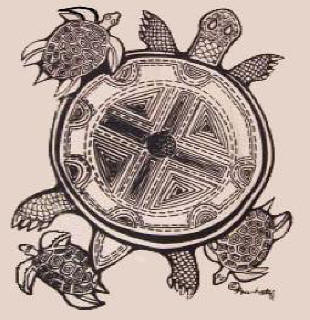|
LITR 4231 Early American Literature |
Final Exam Essays 2014 Sample answers
for |
 |
Elizabeth Sorensen
Which America Do I Teach?
I
have chosen to stick closely to the theme of “which America to teach” because
this question applies most to my future. Since being asked this question at the
beginning of the semester, I have found it to be very profound. The answer is
not easy to come by and I had to think very hard about what I want my students
to get out of my class should I teach a history class. Ultimately, I want them
to know the truth and this comes from primary source documents such as those
highlighted in our course.
One text in this course I found that could very easily be applied to an early
American history course is the Narrative
of Life of Olaudah Equiano. Slavery was always one of those topics that
teachers sort of breezed over in my experience. I assume that is the case
because there is a lot of room for students to ask questions that might not have
very good answers or no answers at all. This first-hand account of what capture
and slavery was like for one slave has the potential to reach my students on
another level. As I said before, slavery was discussed but not from the
perspective of a slave. The narrative begins by stating, “By
the horrors of that trade was I first torn away from all the tender connexions
that were naturally dear to my heart; but these, through the mysterious ways of
Providence, I ought to regard as infinitely more than compensated by the
introduction I have thence obtained to the knowledge of the Christian religion,
and of a nation which, by its liberal sentiments, its humanity, the glorious
freedom of its government, and its proficiency in arts and sciences, has exalted
the dignity of human nature.” I was instantly captured after merely reading
these few lines. I read further and though about how I wished I could have read
something like this in my history class or an excerpt at least. I could have
learned so much more than I did when I was in middle school and high school.
Furthermore, this text could easily be connected to the captivity narratives as
well as the Cherokee Memorials.
Now we have various texts that depict various cultures/ethnicities in different
lights. Who is the villain, victim, or hero in all these stories?
In a way, all parties at some point in history are one or more of these things
at the same time. Americans captured by Indians are victims while the Indians
are villains, but looking at it another way, the Indians could also be victims
because Americans encroached on their lands. Furthermore, Olaudah Equiano was a
victim but he was also the hero of his own story because he had the courage to
become educated and fight for what he believed in. Similarly, the Cherokee
Indians could be heroes of their own story because they also fought for their
rights through politics. Moreover, Americans could also be depicted as victims
to their own arrogance and then heroes in later American history when slavery
was abolished.
What should students take from all of this? Differing perspectives through primary source documents shed a different light on American history. Everything that happened, both good and bad, is a part of what made America what it is today and as Americans we should work as hard as we can to not repeat the wrongs of the past. This is what I want my students to take away from my class.
|
|
|
|


